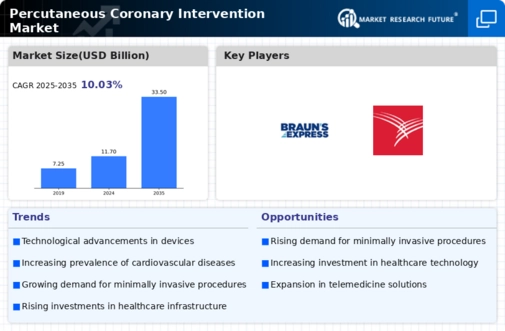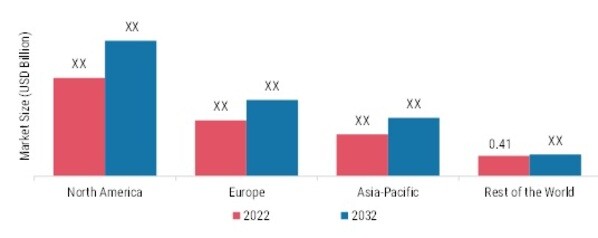-
EXECUTIVE SUMMARY
-
OVERVIEW
-
MARKET INTRODUCTION
-
DEFINITION
-
SCOPE OF THE STUDY
-
RESEARCH OBJECTIVE
-
LIST OF ASSUMPTIONS & LIMITATIONS
-
RESEARCH METHODOLOGY
-
DATA MINING
-
SECONDARY RESEARCH
-
PRIMARY RESEARCH
- PRIMARY INTERVIEWS AND INFORMATION GATHERING PROCESS
- BREAKDOWN OF PRIMARY RESPONDENTS
-
FORECASTING TECHNIQUES
-
RESEARCH METHODOLOGY FOR MARKET SIZE ESTIMATION
- BOTTOM-UP APPROACH
- TOP-DOWN APPROACH
-
DATA TRIANGULATION
-
VALIDATION
-
MARKET DYNAMICS
-
OVERVIEW
-
DRIVERS
- RISING PREVALENCE OF HEART DISEASES
- INCREASING PREFERENCE FOR MINIMALLY INVASIVE PROCEDURES
-
RESTRAINTS
- RISK OF INFECTION
- COMPLICATIONS DURING CARDIAC CATHETERIZATION
-
OPPORTUNITIES
- GROWING TECHNOLOGICAL ADVANCEMENTS
-
MARKET FACTOR ANALYSIS
-
VALUE CHAIN ANALYSIS
- R&D
- MANUFACTURING
- DISTRIBUTION AND SALES
- POST-SALES MONITORING
-
PORTER’S FIVE FORCES MODEL
- THREAT OF NEW ENTRANTS
- BARGAINING POWER OF SUPPLIERS
- THREAT OF SUBSTITUTES
- BARGAINING POWER OF BUYERS
- INTENSITY OF RIVALRY
-
IMPACT OF COVID-19 ON THE GLOBAL PERCUTANEOUS CORONARY INTERVENTION MARKET
- IMPACT ON SUPPLY CHAIN
- IMPACT ON KEY PLAYERS
- IMPACT ON DEMAND AND SUPPLY
-
INSIGHTS: TECHNOLOGICAL ADVANCEMENT FOR PERCUTANEOUS CORONARY INTERVENTION PRODUCTS
-
GLOBAL PERCUTANEOUS CORONARY INTERVENTION MARKET, BY PRODUCT TYPE
-
OVERVIEW
- CORONARY STENTS
- BALLON CATHETERS
- CORONARY GUIDEWIRES
- GUIDING CATHETERS
- GUIDING SHEATHS
- DIAGNOSTIC CATHETERS
- CROSSING CATHETERS
- INFLATION DEVICE
- GUIDANCE SYSTEM
- PERIPHERAL THROMBECTOMY SYSTEM
- EMBOLIC PROTECTION SYSTEM
- ACCESSORIES
-
GLOBAL PERCUTANEOUS CORONARY INTERVENTION MARKET, BY VASCULAR ACCESS
-
OVERVIEW
- RADIAL
- FEMORAL
-
GLOBAL PERCUTANEOUS CORONARY INTERVENTION MARKET, BY END USER
-
OVERVIEW
- HOSPITALS & CLINICS
- AMBULATORY SURGICAL CENTERS
- OTHERS
-
GLOBAL PERCUTANEOUS CORONARY INTERVENTION MARKET, BY REGION
-
OVERVIEW
-
NORTH AMERICA
- US
- CANADA
-
EUROPE
- GERMANY
- FRANCE
- UK
- ITALY
- SPAIN
- SWITZERLAND
- NETHERLAND
- BELGIUM
- POLAND
- REST OF EUROPE
-
ASIA-PACIFIC
- CHINA
- JAPAN
- INDIA
- AUSTRALIA
- SOUTH KOREA
- SINGAPORE
- THAILAND
- VIETNAM
- REST OF ASIA-PACIFIC
-
REST OF THE WORLD
- AFRICA
- LATIN AMERICA
- MIDDLE EAST
-
COMPETITIVE LANDSCAPE
-
OVERVIEW
-
COMPETITIVE BENCHMARKING
-
MARKET SHARE ANALYSIS MAJOR PLAYER
- BOSTON SCIENTIFIC CORPORATION
- ABBOTT
- MEDTRONIC
- TERUMO CORPORATION
- MICROPORT SCIENTIFIC CORPORATION
-
MAJOR GROWTH STRATEGY IN THE GLOBAL PERCUTANEOUS CORONARY INTERVENTION MARKET
-
THE LEADING PLAYER IN TERMS OF THE NUMBER OF DEVELOPMENTS IN THE GLOBAL PERCUTANEOUS CORONARY INTERVENTION MARKET
-
KEY DEVELOPMENT ANALYSIS
-
KEY DEVELOPMENTS & GROWTH STRATEGIES
- PRODUCT LAUNCH / PRODUCT APPROVAL
- AGREEMENT
-
MAJOR PLAYERS FINANCIAL
- SALES (USD MILLION), 2022
- RESEARCH & DEVELOPMENT EXPENDITURE (USD MILLION), 2022
-
COMPANY PROFILES
-
BOSTON SCIENTIFIC CORPORATION
- COMPANY OVERVIEW
- FINANCIAL OVERVIEW
- PRODUCTS OFFERED
- KEY DEVELOPMENTS
- SWOT ANALYSIS
- KEY STRATEGIES
-
ABBOTT
- COMPANY OVERVIEW
- FINANCIAL OVERVIEW
- PRODUCTS OFFERED
- KEY DEVELOPMENTS
- SWOT ANALYSIS
- KEY STRATEGIES
-
MEDTRONIC
- COMPANY OVERVIEWS
- FINANCIAL OVERVIEW
- PRODUCTS OFFERED
- KEY DEVELOPMENTS
- SWOT ANALYSIS
- KEY STRATEGIES
-
COOK
- COMPANY OVERVIEW
- FINANCIAL OVERVIEW
- PRODUCTS OFFERED
- KEY DEVELOPMENTS
- KEY STRATEGIES
-
MERIT MEDICAL SYSTEM
- COMPANY OVERVIEW
- FINANCIAL OVERVIEW
- PRODUCTS OFFERED
- KEY DEVELOPMENTS
- KEY STRATEGIES
-
TERUMO CORPORATION
- COMPANY OVERVIEW
- FINANCIAL OVERVIEW
- PRODUCTS OFFERED
- KEY DEVELOPMENTS
- KEY DEVELOPMENTS
- KEY STRATEGIES
-
APT MEDICAL INC
- COMPANY OVERVIEW
- FINANCIAL OVERVIEW
- PRODUCTS OFFERED
- KEY DEVELOPMENTS
- KEY STRATEGIES
-
BECTON, DICKINSON, AND COMPANY
- COMPANY OVERVIEW
- FINANCIAL OVERVIEW
- PRODUCTS OFFERED
- KEY DEVELOPMENTS
- SWOT ANALYSIS
- KEY STRATEGIES
-
B. BRAUN SE
- COMPANY OVERVIEW
- FINANCIAL OVERVIEW
- PRODUCTS OFFERED
- KEY DEVELOPMENTS
- SWOT ANALYSIS
- KEY STRATEGIES
-
CARDINAL HEALTH
- COMPANY OVERVIEW
- FINANCIAL OVERVIEW
- PRODUCTS OFFERED
- KEY DEVELOPMENTS
- KEY STRATEGIES
-
MERIL LIFE SCIENCES PVT. LTD
- COMPANY OVERVIEWS
- FINANCIAL OVERVIEW
- PRODUCTS OFFERED
- KEY DEVELOPMENTS
- KEY STRATEGIES
-
PLS MINIMALLY INVASIVE INTERVENTIONAL MEDICAL CO., LTD
- COMPANY OVERVIEW
- FINANCIAL OVERVIEW
- PRODUCTS OFFERED
- KEY DEVELOPMENTS
- KEY STRATEGIES
-
MICROPORT SCIENTIFIC CORPORATION
- COMPANY OVERVIEW
- FINANCIAL OVERVIEW
- PRODUCTS OFFERED
- KEY DEVELOPMENTS
- KEY STRATEGIES
-
LEPU MEDICAL TECHNOLOGY CO., LTD
- COMPANY OVERVIEW
- FINANCIAL OVERVIEW
- PRODUCTS OFFERED
- KEY DEVELOPMENTS
- KEY STRATEGIES
-
APPENDIX
-
REFERENCES
-
RELATED REPORTS
-
-
LIST OF TABLES
-
LIST OF ASSUMPTIONS & LIMITATIONS
-
GLOBAL PERCUTANEOUS CORONARY INTERVENTION MARKET, BY PRODUCT TYPE, 2019–2032 (USD MILLION)
-
GLOBAL PERCUTANEOUS CORONARY INTERVENTION MARKET, FOR CORONARY STENTS, BY REGION, 2019–2032 (USD MILLION)
-
GLOBAL PERCUTANEOUS CORONARY INTERVENTION MARKET, FOR BALLON CATHETERS, BY REGION, 2019–2032 (USD MILLION)
-
GLOBAL PERCUTANEOUS CORONARY INTERVENTION MARKET, FOR BALLON CATHETERS, BY TYPE, 2019–2032 (USD MILLION)
-
GLOBAL PERCUTANEOUS CORONARY INTERVENTION MARKET, FOR CORONARY GUIDEWIRES, BY REGION, 2019–2032 (USD MILLION)
-
GLOBAL PERCUTANEOUS CORONARY INTERVENTION MARKET, FOR GUIDING CATHETERS, BY REGION, 2019–2032 (USD MILLION)
-
GLOBAL PERCUTANEOUS CORONARY INTERVENTION MARKET, FOR GUIDING SHEATHS, BY REGION, 2019–2032 (USD MILLION)
-
GLOBAL PERCUTANEOUS CORONARY INTERVENTION MARKET, FOR DIAGNOSTICS CATHETERS, BY REGION, 2019–2032 (USD MILLION)
-
GLOBAL PERCUTANEOUS CORONARY INTERVENTION MARKET, FOR CROSSING CATHETERS, BY REGION, 2019–2032 (USD MILLION)
-
GLOBAL PERCUTANEOUS CORONARY INTERVENTION MARKET, FOR INFLATION DEVICE, BY REGION, 2019–2032 (USD MILLION)
-
GLOBAL PERCUTANEOUS CORONARY INTERVENTION MARKET, FOR GUIDANCE SYSTEM, BY REGION, 2019–2032 (USD MILLION)
-
GLOBAL PERCUTANEOUS CORONARY INTERVENTION MARKET, FOR PERIPHERAL THROMBECTOMY SYSTEM, BY REGION, 2019–2032 (USD MILLION)
-
GLOBAL PERCUTANEOUS CORONARY INTERVENTION MARKET, FOR EMBOLIC PROTECTION SYSTEM, BY REGION, 2019–2032 (USD MILLION)
-
GLOBAL PERCUTANEOUS CORONARY INTERVENTION MARKET, FOR ACCESSORIES, BY REGION, 2019–2032 (USD MILLION)
-
GLOBAL PERCUTANEOUS CORONARY INTERVENTION MARKET, BY VASCULAR ACCESS, 2019–2032 (USD MILLION)
-
GLOBAL PERCUTANEOUS CORONARY INTERVENTION MARKET, FOR RADIAL, BY REGION, 2019–2032 (USD MILLION)
-
GLOBAL PERCUTANEOUS CORONARY INTERVENTION MARKET, FOR FEMORAL, BY REGION, 2019–2032 (USD MILLION)
-
GLOBAL PERCUTANEOUS CORONARY INTERVENTION MARKET, BY END USER, 2019–2032 (USD MILLION)
-
GLOBAL PERCUTANEOUS CORONARY INTERVENTION MARKET, FOR HOSPITALS & CLINICS, BY REGION, 2019–2032 (USD MILLION)
-
GLOBAL PERCUTANEOUS CORONARY INTERVENTION MARKET, FOR AMBULATORY SURGICAL CENTERS, BY REGION, 2019–2032 (USD MILLION)
-
GLOBAL PERCUTANEOUS CORONARY INTERVENTION MARKET, FOR OTHERS, BY REGION, 2019–2032 (USD MILLION)
-
GLOBAL: PERCUTANEOUS CORONARY INTERVENTION MARKET, BY REGION, 2019–2032 (USD MILLION)
-
NORTH AMERICA: PERCUTANEOUS CORONARY INTERVENTION MARKET, BY COUNTRY, 2019–2032 (USD MILLION)
-
NORTH AMERICA: PERCUTANEOUS CORONARY INTERVENTION MARKET, BY PRODUCT TYPE, 2019–2032 (USD MILLION)
-
NORTH AMERICA: PERCUTANEOUS CORONARY INTERVENTION MARKET, FOR BALLON CATHETERS, BY TYPE, 2019–2032 (USD MILLION)
-
NORTH AMERICA: PERCUTANEOUS CORONARY INTERVENTION MARKET, BY VASCULAR ACCESS, 2019–2032 (USD MILLION)
-
NORTH AMERICA: PERCUTANEOUS CORONARY INTERVENTION MARKET, BY END USER, 2019–2032 (USD MILLION)
-
US: PERCUTANEOUS CORONARY INTERVENTION MARKET, BY PRODUCT TYPE, 2019–2032 (USD MILLION)
-
US: PERCUTANEOUS CORONARY INTERVENTION MARKET, FOR BALLON CATHETERS, BY TYPE, 2019–2032 (USD MILLION)
-
US: PERCUTANEOUS CORONARY INTERVENTION MARKET, BY VASCULAR ACCESS, 2019–2032 (USD MILLION)
-
US: PERCUTANEOUS CORONARY INTERVENTION MARKET, BY END USER, 2019–2032 (USD MILLION)
-
CANADA: PERCUTANEOUS CORONARY INTERVENTION MARKET, BY PRODUCT TYPE, 2019–2032 (USD MILLION)
-
CANADA: PERCUTANEOUS CORONARY INTERVENTION MARKET, FOR BALLON CATHETERS, BY TYPE, 2019–2032 (USD MILLION)
-
CANADA: PERCUTANEOUS CORONARY INTERVENTION MARKET, BY VASCULAR ACCESS, 2019–2032 (USD MILLION)
-
CANADA: PERCUTANEOUS CORONARY INTERVENTION MARKET, BY END USER, 2019–2032 (USD MILLION)
-
EUROPE: PERCUTANEOUS CORONARY INTERVENTION MARKET, BY COUNTRY, 2019–2032 (USD MILLION)
-
EUROPE: PERCUTANEOUS CORONARY INTERVENTION MARKET, BY PRODUCT TYPE, 2019–2032 (USD MILLION)
-
EUROPE: PERCUTANEOUS CORONARY INTERVENTION MARKET, FOR BALLON CATHETERS, BY TYPE, 2019–2032 (USD MILLION)
-
EUROPE: PERCUTANEOUS CORONARY INTERVENTION MARKET, BY VASCULAR ACCESS, 2019–2032 (USD MILLION)
-
EUROPE: PERCUTANEOUS CORONARY INTERVENTION MARKET, BY END USER, 2019–2032 (USD MILLION)
-
GERMANY: PERCUTANEOUS CORONARY INTERVENTION MARKET, BY PRODUCT TYPE, 2019–2032 (USD MILLION)
-
GERMANY: PERCUTANEOUS CORONARY INTERVENTION MARKET, FOR BALLON CATHETERS, BY TYPE, 2019–2032 (USD MILLION)
-
GERMANY: PERCUTANEOUS CORONARY INTERVENTION MARKET, BY VASCULAR ACCESS, 2019–2032 (USD MILLION)
-
GERMANY: PERCUTANEOUS CORONARY INTERVENTION MARKET, BY END USER, 2019–2032 (USD MILLION)
-
FRANCE: PERCUTANEOUS CORONARY INTERVENTION MARKET, BY PRODUCT TYPE, 2019–2032 (USD MILLION)
-
FRANCE: PERCUTANEOUS CORONARY INTERVENTION MARKET, FOR BALLON CATHETERS, BY TYPE, 2019–2032 (USD MILLION)
-
FRANCE: PERCUTANEOUS CORONARY INTERVENTION MARKET, BY VASCULAR ACCESS, 2019–2032 (USD MILLION)
-
FRANCE: PERCUTANEOUS CORONARY INTERVENTION MARKET, BY END USER, 2019–2032 (USD MILLION)
-
UK: PERCUTANEOUS CORONARY INTERVENTION MARKET, BY PRODUCT TYPE, 2019–2032 (USD MILLION)
-
UK: PERCUTANEOUS CORONARY INTERVENTION MARKET, FOR BALLON CATHETERS, BY TYPE, 2019–2032 (USD MILLION)
-
UK: PERCUTANEOUS CORONARY INTERVENTION MARKET, BY VASCULAR ACCESS, 2019–2032 (USD MILLION)
-
UK: PERCUTANEOUS CORONARY INTERVENTION MARKET, BY END USER, 2019–2032 (USD MILLION)
-
ITALY: PERCUTANEOUS CORONARY INTERVENTION MARKET, BY PRODUCT TYPE, 2019–2032 (USD MILLION)
-
ITALY: PERCUTANEOUS CORONARY INTERVENTION MARKET, FOR BALLON CATHETERS, BY TYPE, 2019–2032 (USD MILLION)
-
ITALY: PERCUTANEOUS CORONARY INTERVENTION MARKET, BY VASCULAR ACCESS, 2019–2032 (USD MILLION)
-
ITALY: PERCUTANEOUS CORONARY INTERVENTION MARKET, BY END USER, 2019–2032 (USD MILLION)
-
SPAIN: PERCUTANEOUS CORONARY INTERVENTION MARKET, BY PRODUCT TYPE, 2019–2032 (USD MILLION)
-
SPAIN: PERCUTANEOUS CORONARY INTERVENTION MARKET, FOR BALLON CATHETERS, BY TYPE, 2019–2032 (USD MILLION)
-
SPAIN: PERCUTANEOUS CORONARY INTERVENTION MARKET, BY VASCULAR ACCESS, 2019–2032 (USD MILLION)
-
SPAIN: PERCUTANEOUS CORONARY INTERVENTION MARKET, BY END USER, 2019–2032 (USD MILLION)
-
SWITZERLAND: PERCUTANEOUS CORONARY INTERVENTION MARKET, BY PRODUCT TYPE, 2019–2032 (USD MILLION)
-
SWITZERLAND: PERCUTANEOUS CORONARY INTERVENTION MARKET, FOR BALLON CATHETERS, BY TYPE, 2019–2032 (USD MILLION)
-
SWITZERLAND: PERCUTANEOUS CORONARY INTERVENTION MARKET, BY VASCULAR ACCESS, 2019–2032 (USD MILLION)
-
SWITZERLAND: PERCUTANEOUS CORONARY INTERVENTION MARKET, BY END USER, 2019–2032 (USD MILLION)
-
NETHERLAND: PERCUTANEOUS CORONARY INTERVENTION MARKET, BY PRODUCT TYPE, 2019–2032 (USD MILLION)
-
NETHERLAND: PERCUTANEOUS CORONARY INTERVENTION MARKET, FOR BALLON CATHETERS, BY TYPE, 2019–2032 (USD MILLION)
-
NETHERLAND: PERCUTANEOUS CORONARY INTERVENTION MARKET, BY VASCULAR ACCESS, 2019–2032 (USD MILLION)
-
NETHERLAN






Leave a Comment